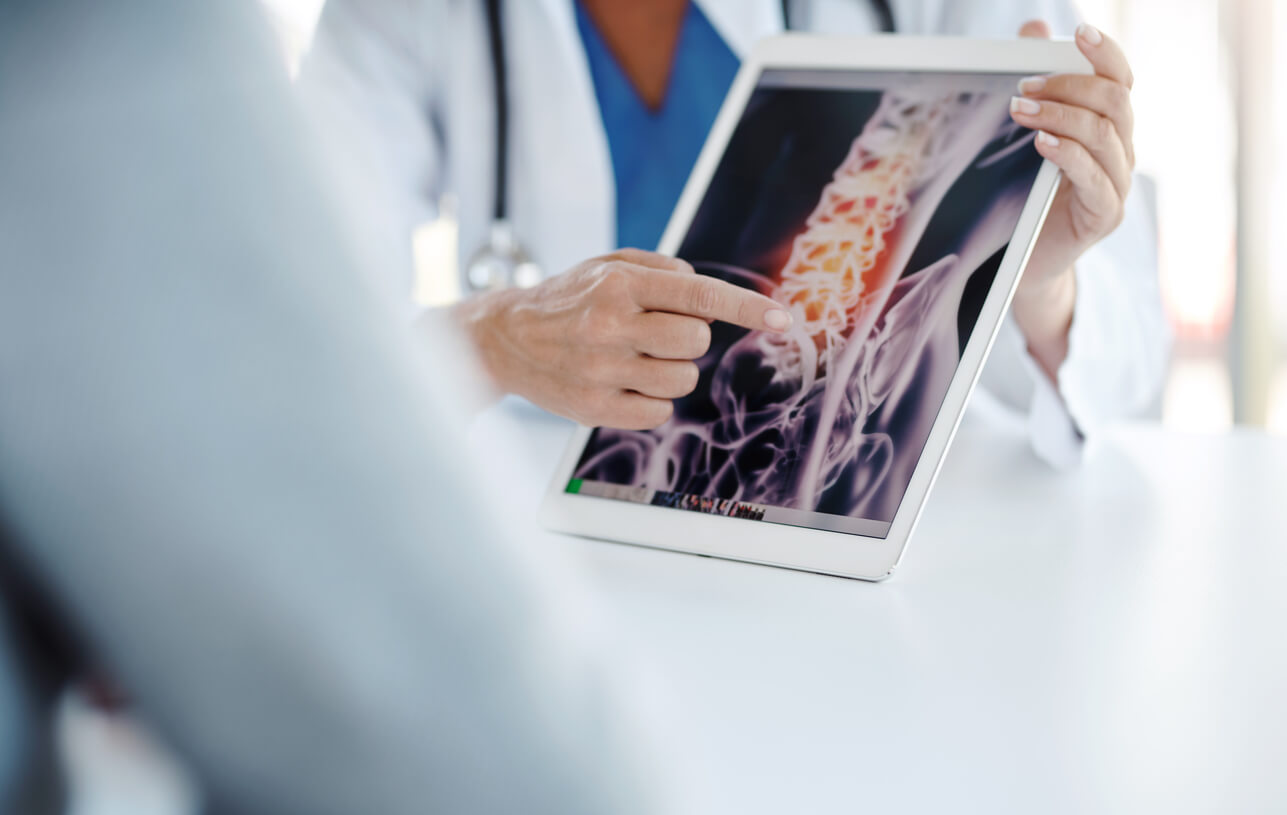Most people pay very little attention to their spine unless they have a problem, typically pain or difficulty moving. Nonetheless, our spinal nerves and the backbones that protect them are literally at the core of our physical being. It is important to understand the anatomy of the spine in order to protect it from being misused and to understand how it is sometimes injured. If you have back pain that doesn’t resolve with simple home remedies like rest, ice and anti-inflammatory medication, you should contact the talented, well-respected doctors at Long Island Spine Rehabilitation Medicine.
We have highly skilled physiatrists (doctors who specialize in pain management and rehabilitation) to diagnose and treat spinal and musculoskeletal problems of all kinds. We also have a number of centers throughout Long Island for your convenience.
Defining the Spine
To understand the spine, you have to be aware that the spinal cord and the spinal column are two different things:
- The spinal cord and spinal nerves are a bundle of nerve fibers enclosed in bone that connects and relays messages to almost all parts of the body to and from the brain. The brain and spinal cord together compose the central nervous system.
- The spinal column consists of vertebrae, bones that protect the spinal cord and nerves and support the body’s trunk.
There are several sections of vertebrae, labeled as follows:
- Cervical vertebrae in the area of the neck
- Thoracic vertebrae in the chest region
- Lumbar vertebrae in the lower back
- Sacrum, a bone which is part of the pelvis
- Coccyx, commonly known as the tailbone
Muscles and nerves are also part of the spinal system, enabling the body to bend and reach and flex. Movement of the spine is controlled by the contraction of the muscles that attach to the spine.
Other definitions that will be helpful to you in understanding your spine follow:
- Discs are the gelatin capsules that absorb shock between the vertebrae, these have a harder outer shell and a softer internal core
- Pedicles are pillars of bone that join the vertebrae in front of the arch of bone at the back of the spine
- Lamina are parts of the arch of the spine that work as a roof over the spinal column
- Facet joints are small joints between and behind adjacent vertebrae. These joints provide stability to the spinal column while facilitating movement. Note: they exist all along the spine from the lumbar to the cervical level.
- Foramina (sing. foramen) are the hollow pathways created by the pedicles of adjacent vertebrae. It is through the foramina that spinal nerve roots run, traveling to organs, muscles and sensory structures to disseminate sensory and motor messages throughout the body.
The Way the Spinal Column Is Constructed
As our body’s central support structure, the spine keeps us upright, working as a connection to all parts of our skeleton: head, chest, pelvis, shoulders, arms and legs. Though the spinal column is a series of linked bones, it is flexible because of the elasticity of the ligaments that connect those bones and the gelatinous spinal discs that cushion them.
What the Spine Does for Us
As noted, the spinal column not only provides support to the body but also protects the delicate spinal nerves. These nerves are essential because they carry electrical signals to and from the brain and the muscles, skin, and internal organs.
The sensory information transmitted notifies our brains of sensations like heat and cold, pain and itching, pleasure and tingling. The motor signals convey messages back and forth from the skin and muscles to the nerves that control our movements. The spine, in collaboration with the brain, acts as an immensely complex electrical transmission station.
Types of Back Pain
If you are reading this blog, you are very likely troubled by back pain which is a good reason to get in touch with Long Island Spine Rehabilitation Medicine for a careful diagnosis. There are three primary types of pain that you may be experiencing:
- Axial (mechanical) pain that is confined to one distinct spot or region. This is the most common type of back pain, frequently caused by muscle strain, facet joint inflammation or tears in discs.
- Referred pain which is pain experienced in another place than in the place of origin, for instance, back pain that is referred to the hips, buttocks or thighs.
- Radicular pain that follows the path of the spinal nerve as it leaves the spinal canal. Radicular pain in the low back, for example, may travel into the leg, as in sciatica. It may be accompanied by weakness, pins and needles, or numbness.
Your description of the type of pain you are experiencing is often very helpful to the doctor attempting to diagnose your problem. Back pain, and pain felt elsewhere that originates in the spine, may be described as a dull ache, a needling sensation, an electrical shock, or a burning sensation. It may be low-grade, sharp and intense, constant or intermittent. Being as precise as possible in your description will help the doctor know where to look first. Physical examination will, of course, be necessary as will imaging tests like X-rays, MRI or CT scans, and/or diagnostic injections.
A First-Rate Spine Specialist Will Help You Find Relief
Whatever type of pain brings you in to consult with a spine specialist, you are by no means alone. It is approximated that 80 percent of Americans suffer from back pain during their lifetimes and back pain first on the list of reasons Americans miss work. Whether you are suffering from a torn ligament due to a sports accident, a herniated disc from a car accident injury, or stenosis linked to the aging process, seeking medical guidance early on may be key to a quick recovery.
